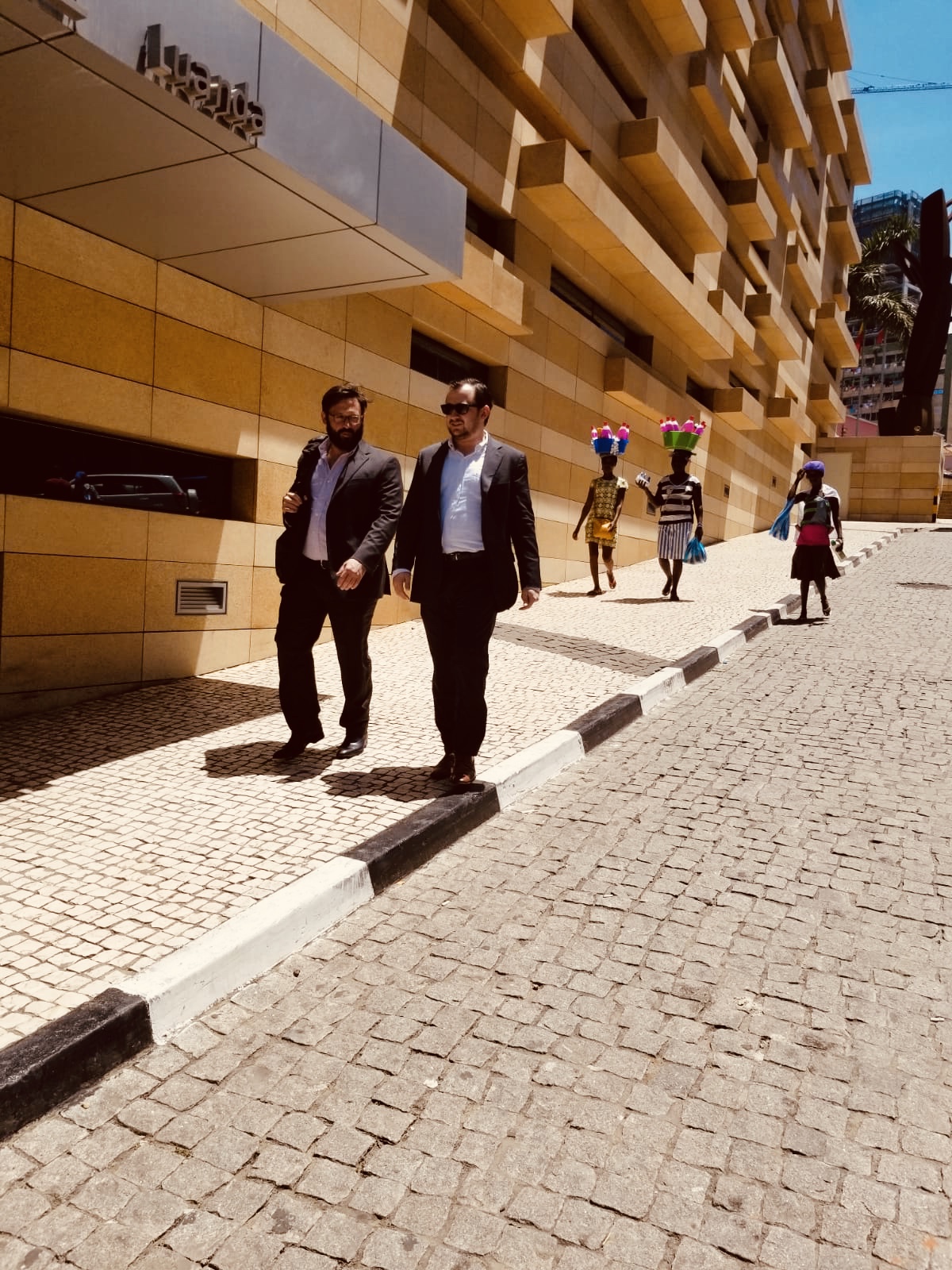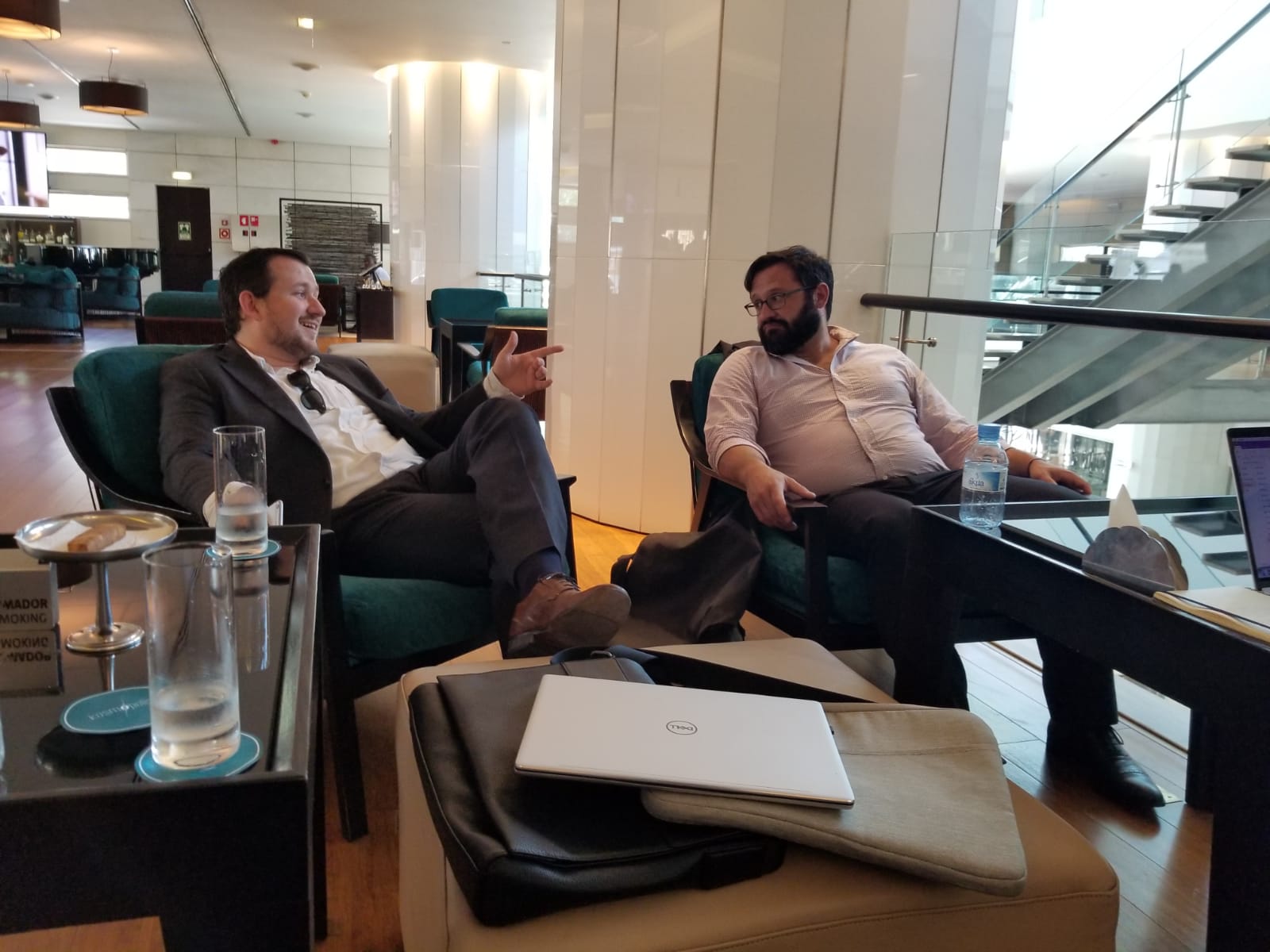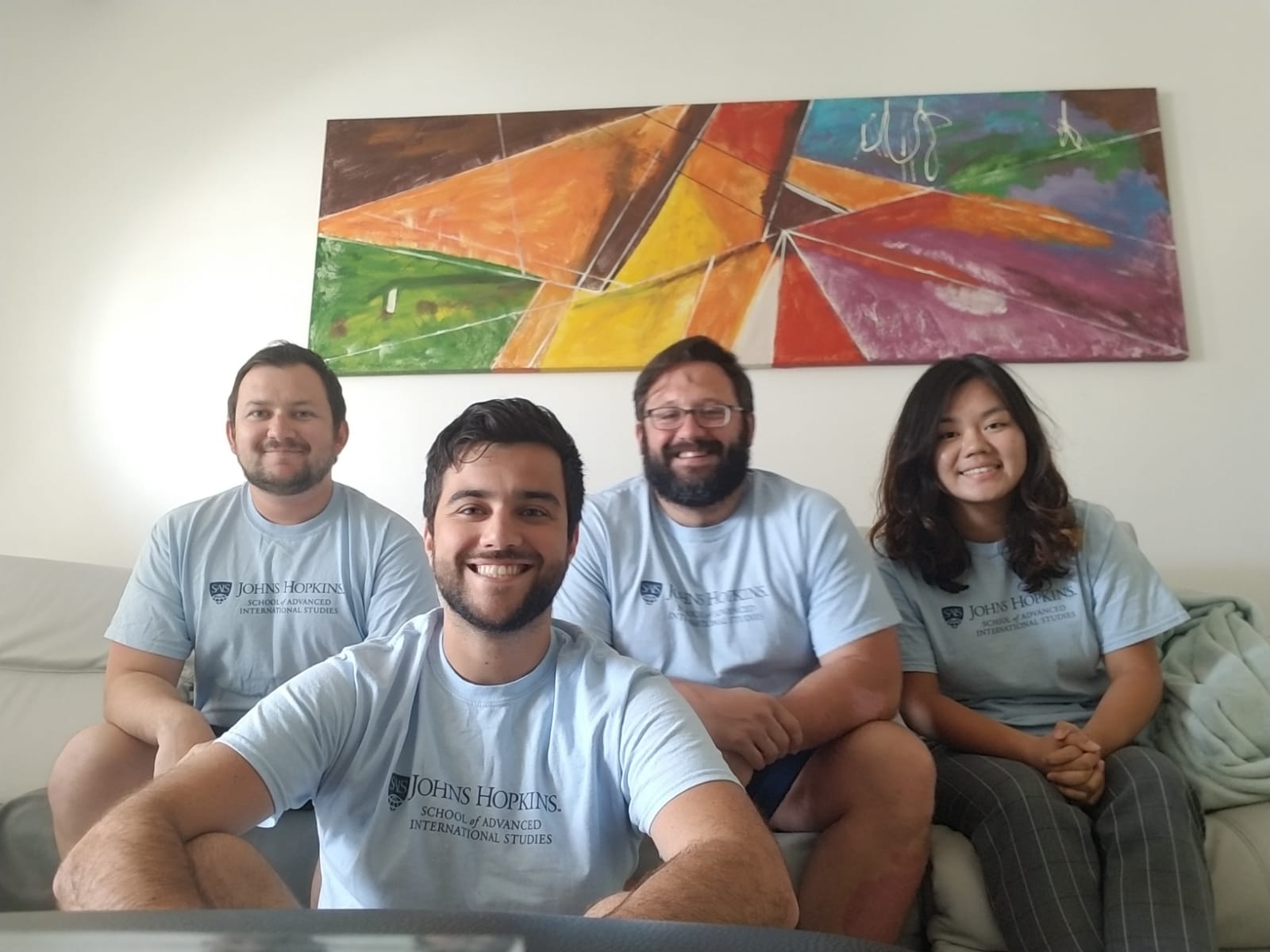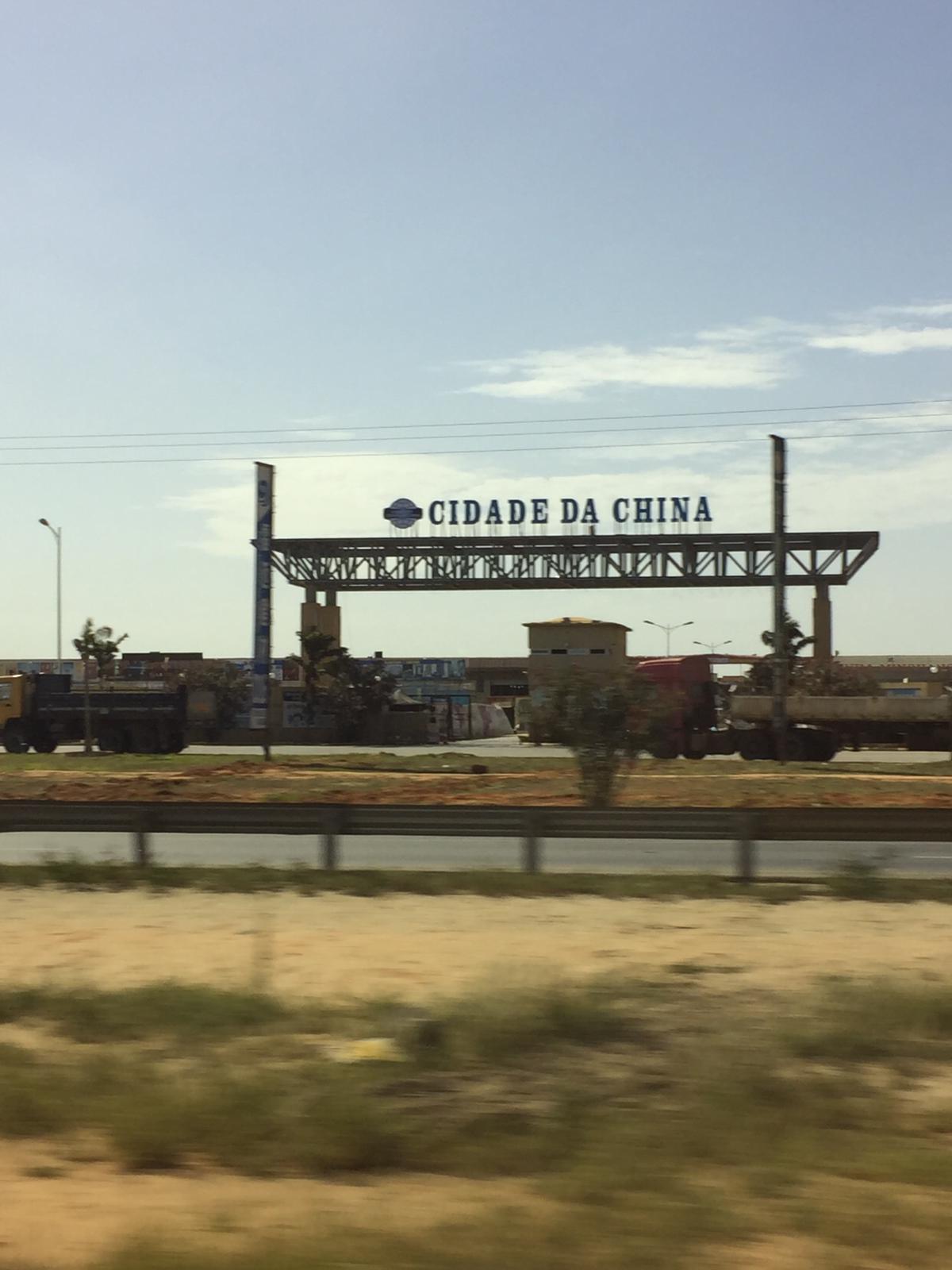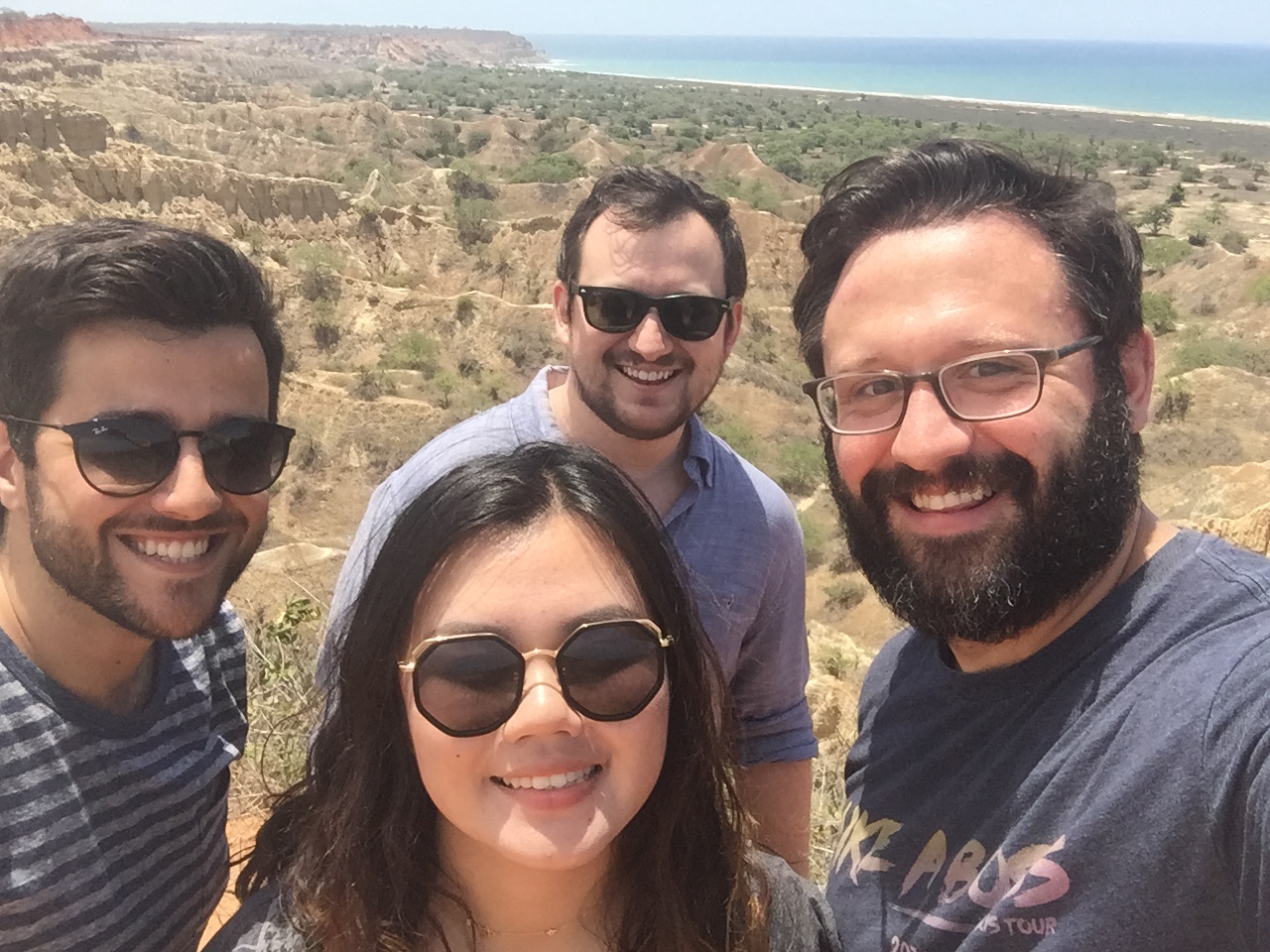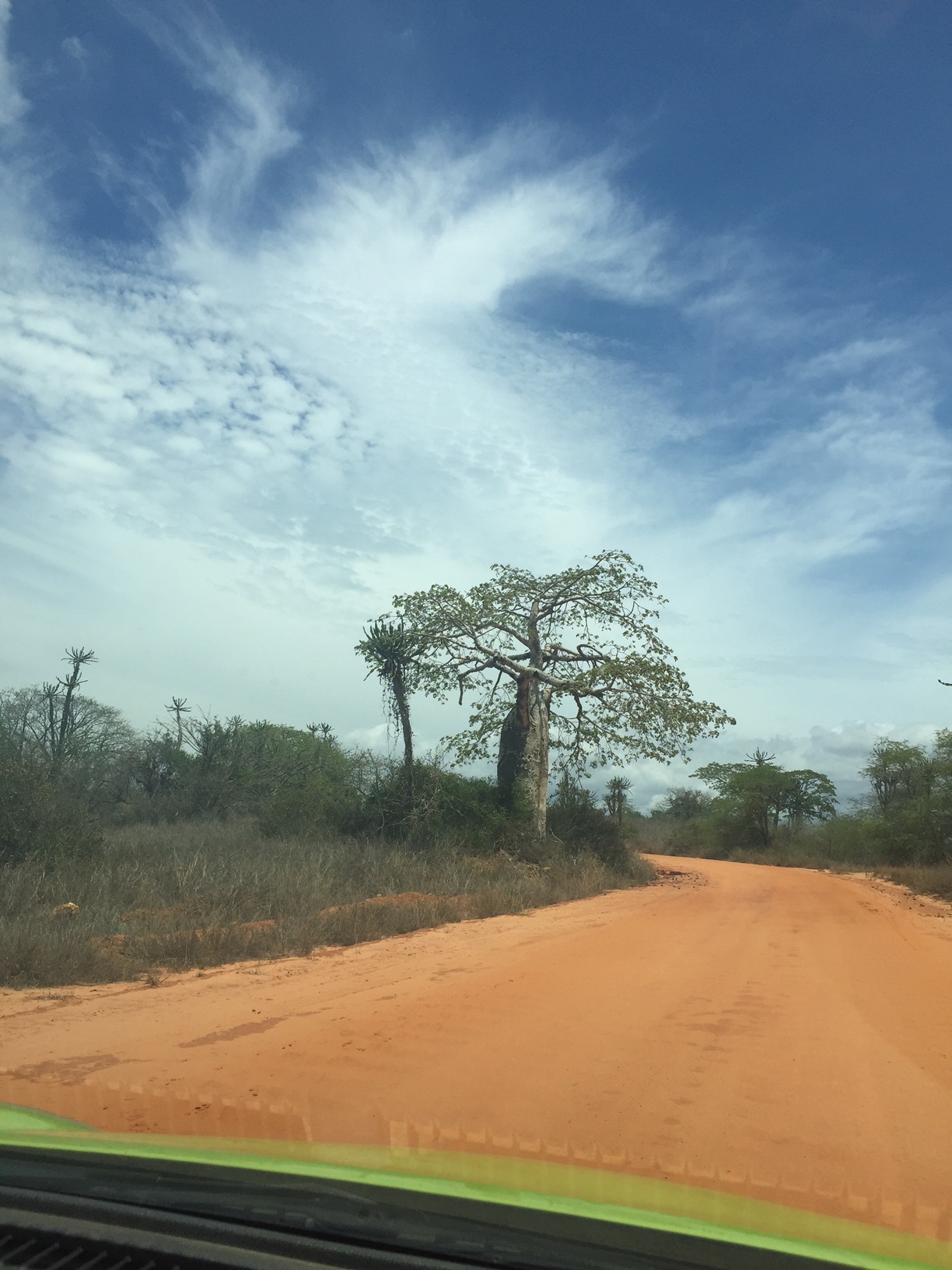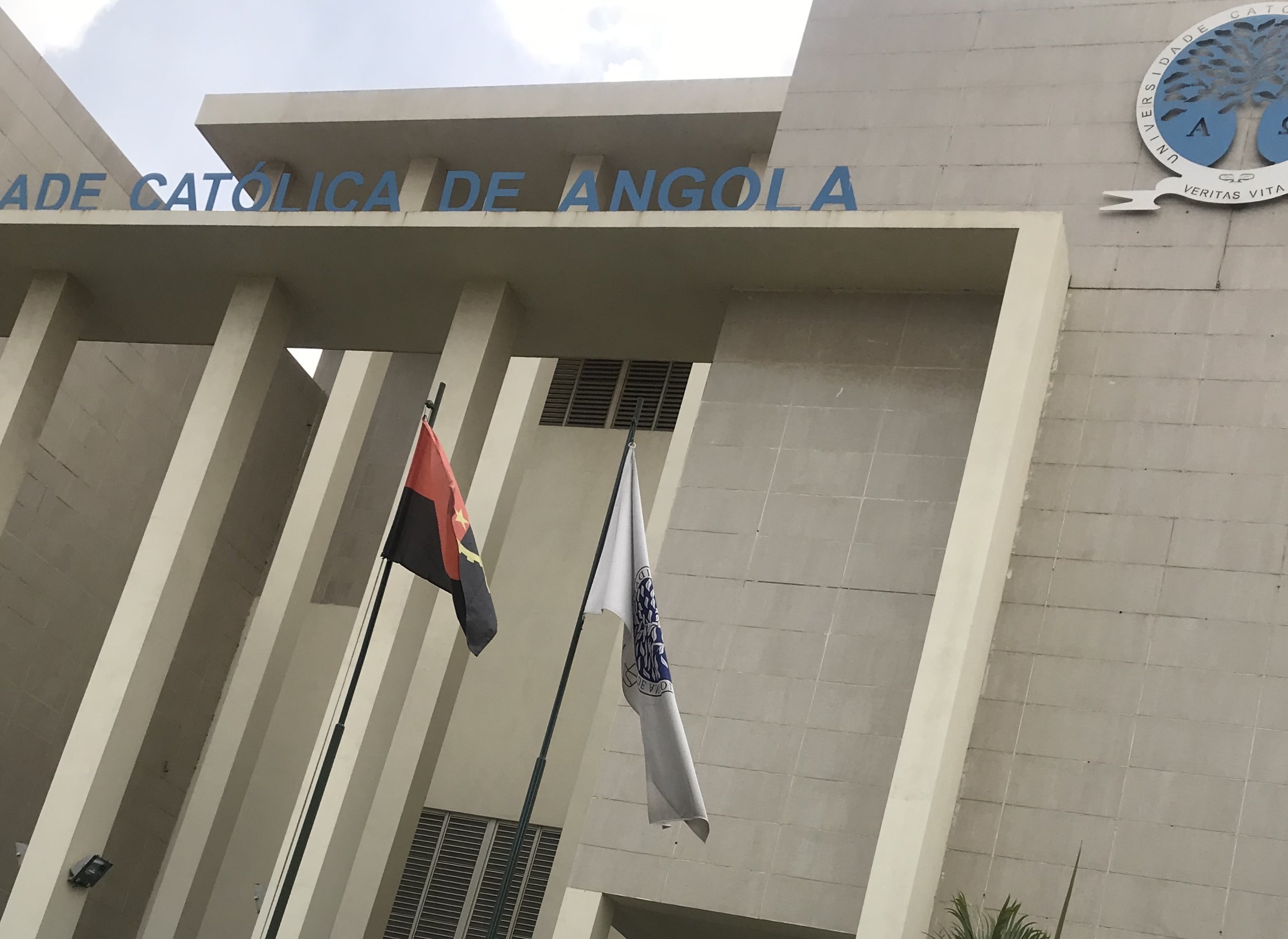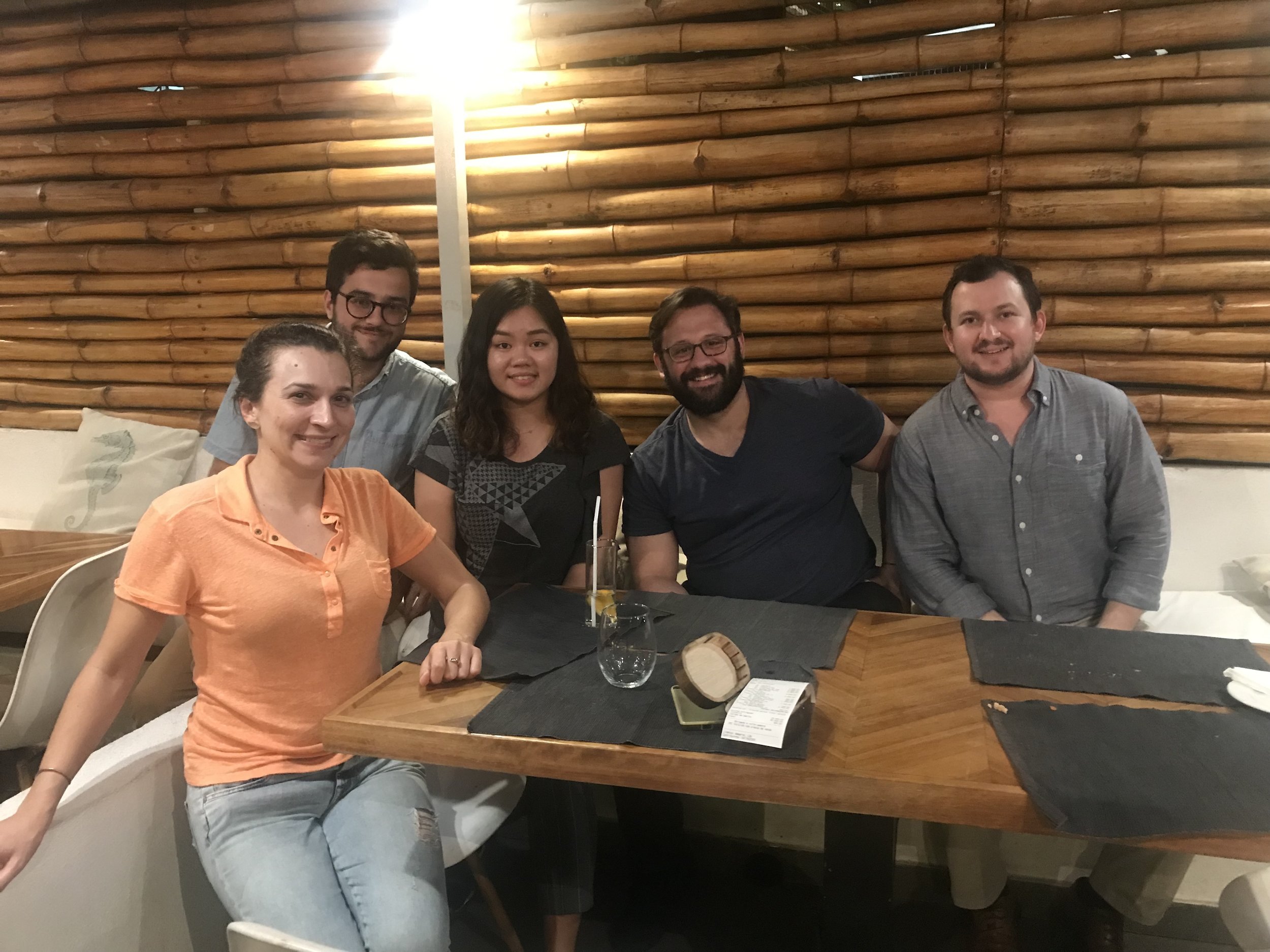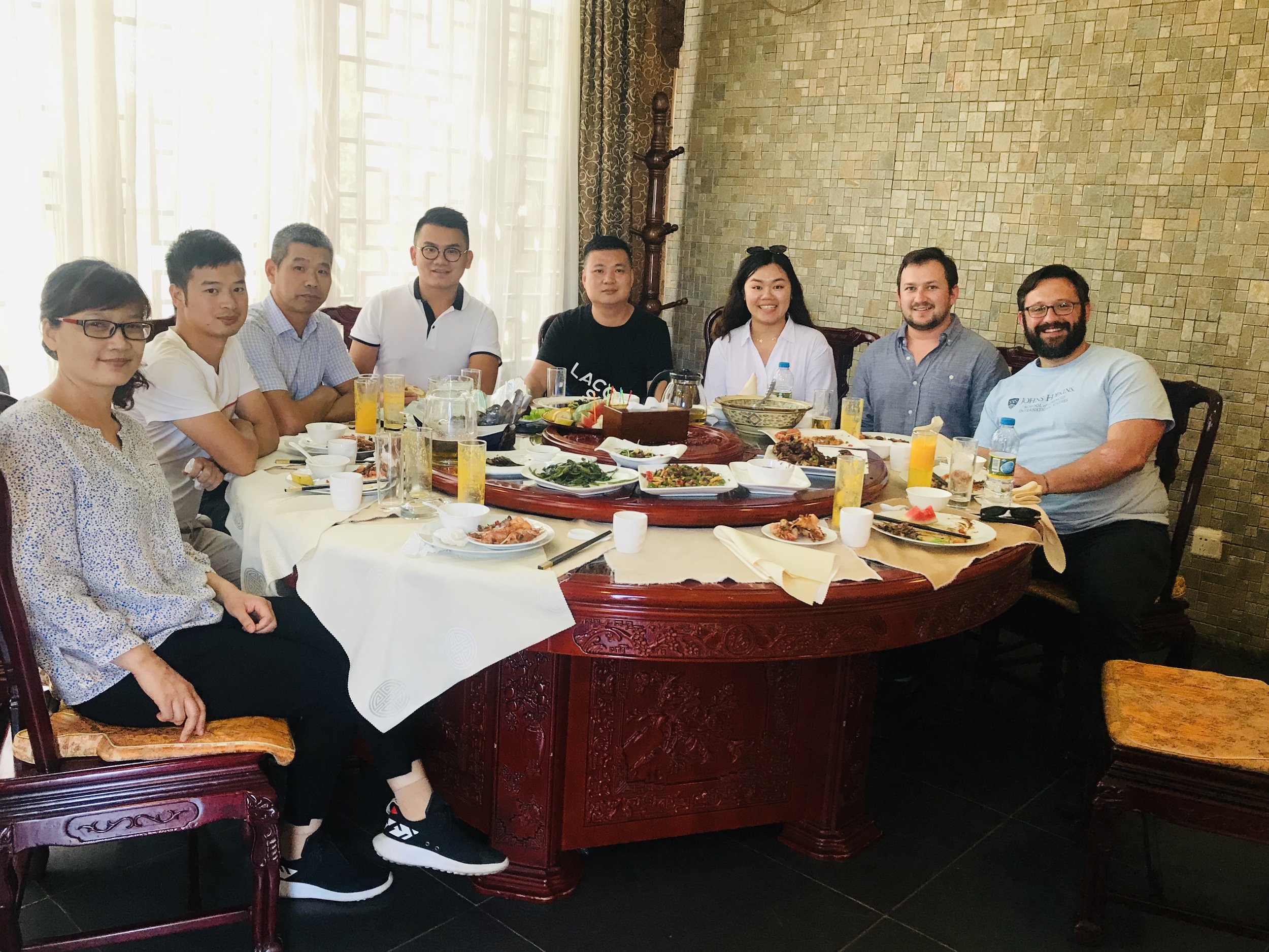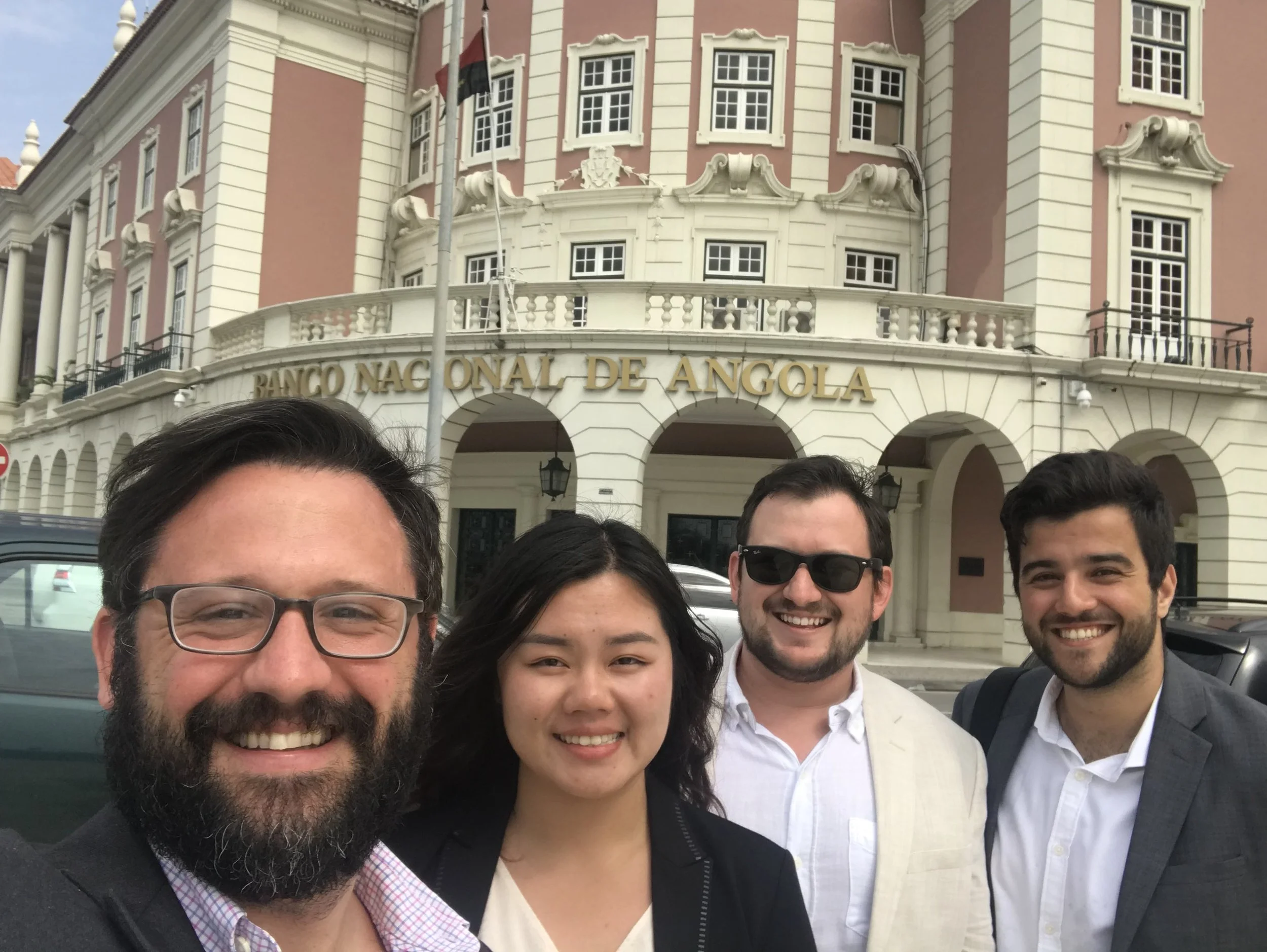BY WILL BURCHELL, JAIYI MA, DYLAN PARKES AND HENRIQUE VICENTE
Will Burchell, Jaiyi Ma, Dylan Parkes and Henrique Vicente are second-year International Development students who traveled to Angola this January in order to gain a better understanding of Chinese lending practices within the country. The team is working with Jefferies Financial Group and the SAIS China Africa Research Initiative (CARI).
The IDEV Practicum allows students to work directly with public, private and non-governmental organizations as a capstone to their graduate studies. The IDEV Practicum Blog is a six-part series that chronicles the travels of IDEV students who take on client projects over winter break.
Key market players – from major creditor countries to private financiers – are still trying to understand China’s emergence as a large international lender. A commonly held view in the West is that Chinese lending practices in developing nations – particularly within Africa – are predatory in nature, burdening these countries with unsustainable debt. Our Practicum clients, Jefferies Financial Group and China Africa Research Initiative (CARI), tasked us with exploring the validity of this view, namely through the investigation of individual bilateral loans.
Since 2000, China has lent over 143 billion USD to African countries; Angola is the largest among them, having borrowed 42 billion USD from China since 2005, primarily in the form of credit lines and project loans. The debt is often collateralized with oil, allowing China to lend more securely and allowing Angola to borrow on more advantageous terms. While the terms of international financial agreements are customarily undisclosed in nature, the heightened level of secrecy surrounding Chinese-Angolan agreements has caused external doubt that Angolan debt is sustainable and serviceable.
The Angolan economy is highly dependent on oil exports; it is the second largest oil producer in Africa. When oil prices plummeted from 2014-2016, the decline in revenues caused a significant fiscal deficit, weakening the country’s economy. The Angolan President, João Lourenço, has recently declared intentions to reform the economy by buckling down on state corruption and developing non-oil industries. In 2018, the IMF agreed to lend Angola 3.5 billion USD, citing these economic reforms as a sign of the country’s progress.
We arrived in Luanda, the nation’s capital, hoping to validate our hypothesis that Chinese lending to Angola reflects a relationship that is more pragmatic than predatory in nature. During our first day there, we were struck by the sight of cranes everywhere we looked, most of which were sitting idle. A few conversations with locals revealed that most of the city’s ongoing construction projects had been suspended since the oil crisis, primarily due to a lack of funding. They stressed little hope that these projects would restart anytime soon, let alone see completion.
This realization largely drove our in-country research and helped us formulate our interview questions – did the delayed payments to contractors suggest delayed loan repayment? Was proper due diligence done prior to loan disbursement? Who were the key actors from both countries involved? Furthermore, how would the new presidential agenda for economic reform impact the Chinese-Angolan relationship?
Over the next 15 days, our team managed to secure over 30 interviews with representatives from the Ministry of Finance and the Central Bank, as well as with foreign diplomats, private sector professionals and the IMF’s resident representative in Angola. While we found little evidence of debt restructuring, our initial goal, the meetings generally served to support our hypothesis that Chinese lending to Angola was in fact practical, as interviewees close to the issue tended to view the relationship as beneficial to both sides. Our team thoroughly enjoyed applying our SAIS-garnered skills to real-world issues; using the tools of analysis we have developed over our two years here, we were able to parse through the complex interactions between a commodity-driven economy with an illiquid currency regime and a hegemonic power with deep pockets.
Now that we’re back for our final semesters in DC, there’s still work to be done. We hope to garner more information on oil-backed lending that will either validate or challenge the findings from our field research. To do so, we’ve arranged meetings with DC-based professionals – primarily academics and multilateral development bank officials – who will hopefully be able to further explain bilateral financing arrangements and project finance dynamics in Sub-Saharan Africa. Ultimately, we’ll be producing a report for Jefferies as well as a paper for CARI that will synthesize our conclusions.
To read about the work that other IDEV Practicum teams did this year, visit this page.
PHOTO CREDIT: Will Burchell, Jaiyi Ma, Dylan Parkes and Henrique Vicente


